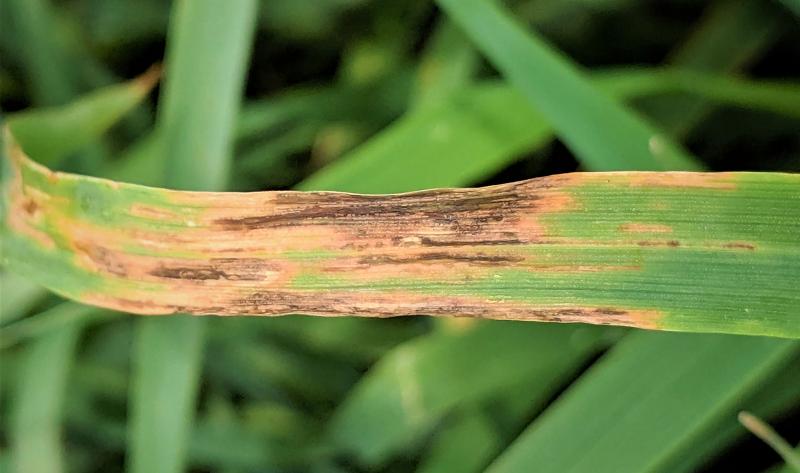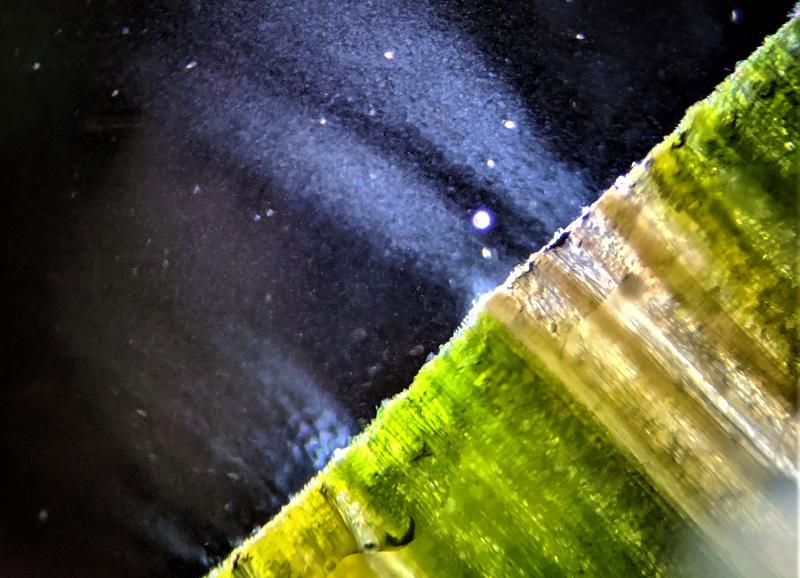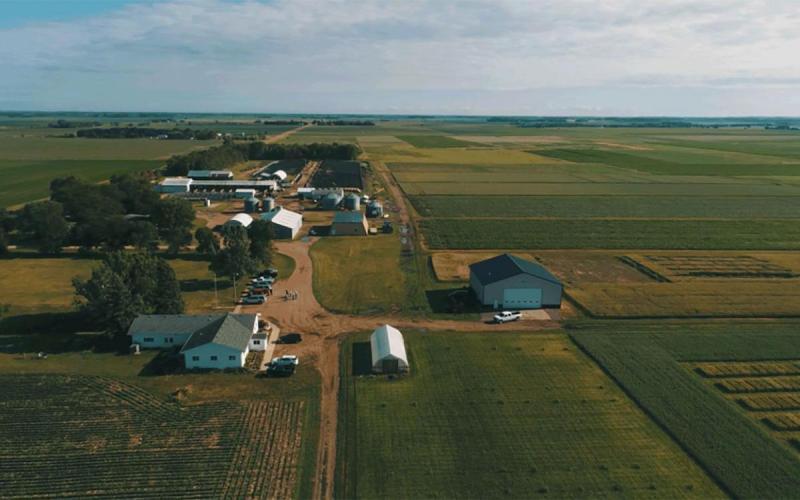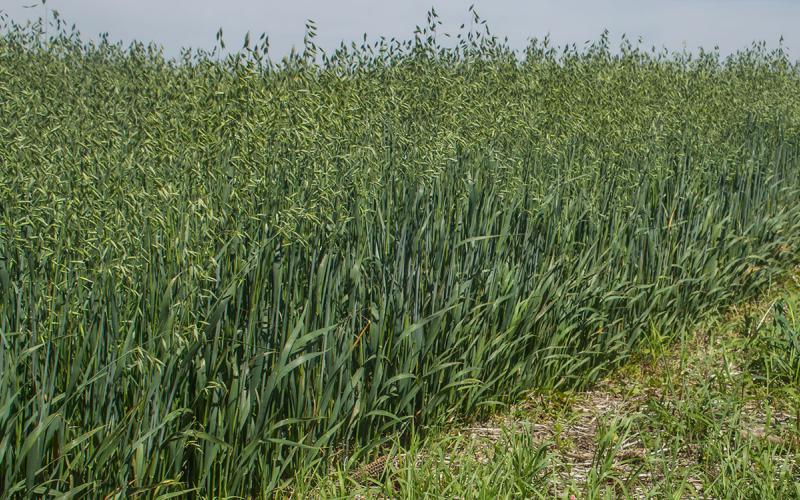
Written collaboratively by Emmanuel Byamukama, former SDSU Extension Plant Pathologist, Shaukat Ali, and Melanie Caffe.
Oats scouted in a few fields in the Eastern and South Central parts of the state were found with bacterial blight developing on the lower leaves. Plants infected have leaves with water-soaked brown longitudinal lesions in the top-half of the leaf (Figure 1). Severe symptoms can lead to premature leaf death.
Disease Cycle

Bacterial blight in oats is caused by Pseudomonas spp. A quick way to confirm bacterial infections is bacterial streaming observed using a stereo microscope (Figure 2). The bacteria survive on crop residue and in soil and is splashed onto leaves by rainfall. Bacterial infections are promoted by leaf injury caused by high winds, hail, sand blasting, insect feeding and other injuries and frequent rainfall.
Management
Bacterial diseases are difficult to manage because of lack of in-season treatments. However, it is important to accurately diagnose the bacterial blight to avoid applying a fungicide in hopes of controlling the disease.
- Practice crop rotation. Pseudomonas spp. have a wide host range, but avoiding planting oats in a small grains residue may help reduce inoculum for bacteria and other pathogens.
- Plant pathogen free certified seed to avoid introducing inoculum to the field. Bacteria can survive on the seed.
- No current ratings of oat varieties are available, but some cultivars are tolerant to bacterial infection.
- Avoid injury to young leaves where possible.

